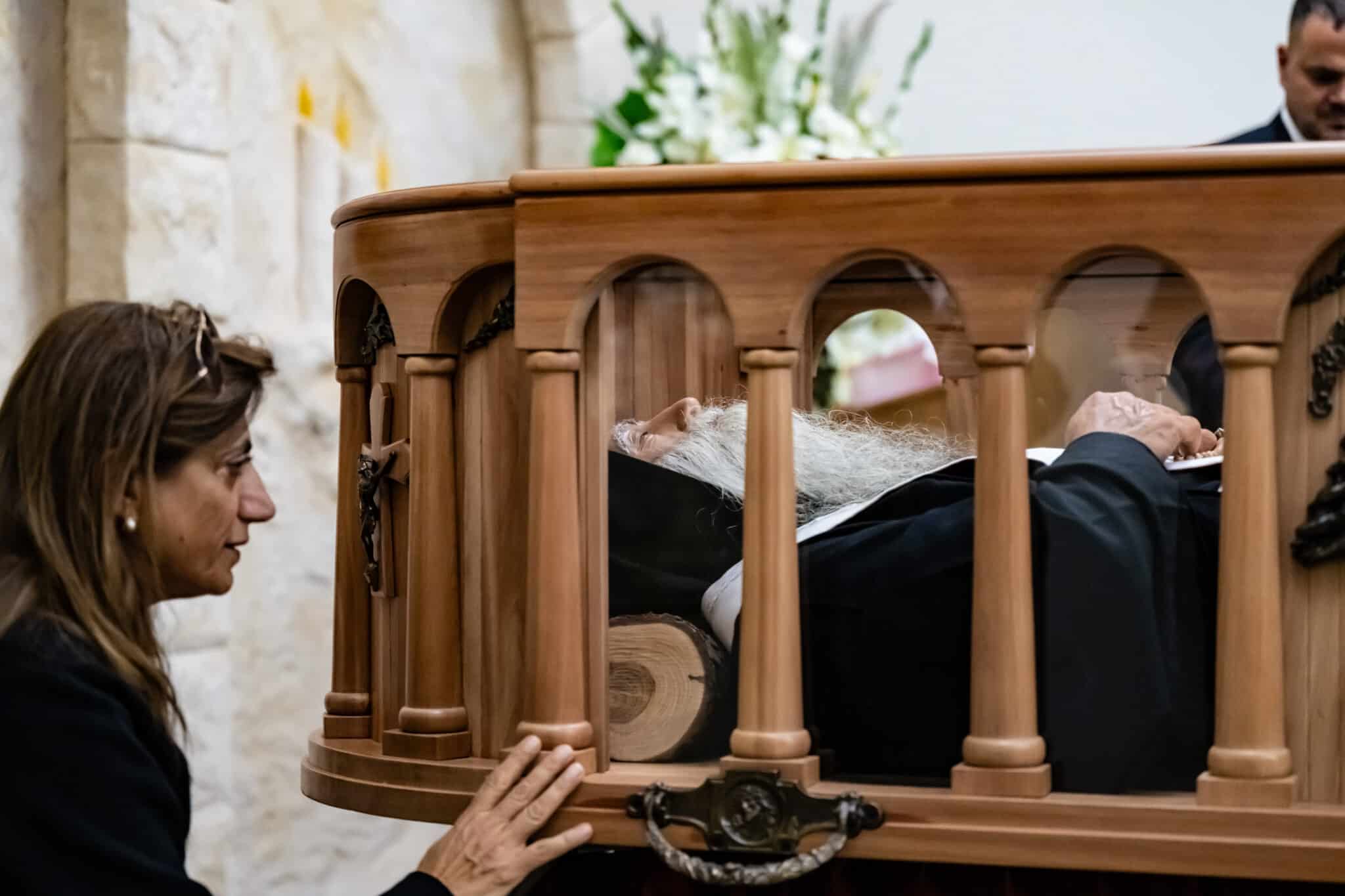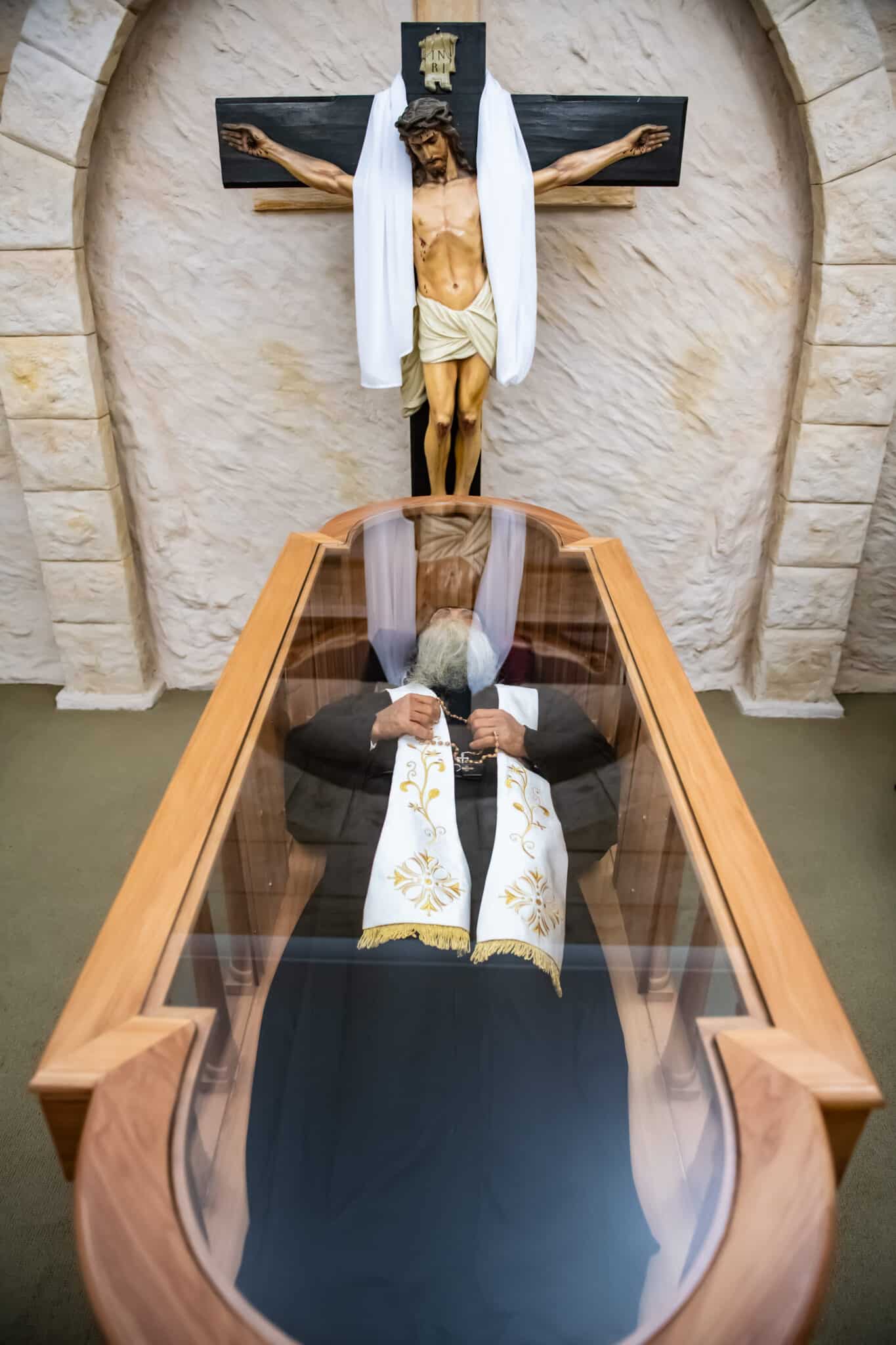I have some Lebanese friends who are very excited about the arrival in Sydney of a replica of the tomb and of the body of St Charbel. I am not Lebanese myself and know nothing about this saint. What can you tell me about him?
St Charbel was born into a poor Catholic Maronite family on 8 May 1828, in the mountain village of Bekaa Kafra in North Lebanon. Given the name Youssef, he was the youngest of five children.
His father Antoun died when Charbel was only three years old. His mother Brigitta was a very religious woman of strong character, known for her daily fasting and praying the rosary. She engaged in silk weaving to support the family.
Two years after Antoun’s death she married Deacon Lahoud and had two more children by him. The children were used to prayer, fasting and attending Mass every day.
Youssef had two maternal uncles who were hermits in the Maronite Monastery of St Antonios in Kozhaya. He would walk for four hours to visit them and receive their guidance, very impressed by their holiness.
When he often commented that he wanted to become a monk, his mother and uncle Tannous, who was his guardian, were opposed and tried to change his mind. Tannous wanted him to continue working with him and his mother wanted him to marry a young woman who loved him.

Nonetheless, in 1851, when he was 23, Youssef left home without telling anyone and walked to the Monastery of Our Lady of Mayfouk on Mount Lebanon to become a monk. There he took the religious name Charbel, a second-century martyr of the Antiochian Church. Br Charbel was transferred to the monastery of St Maroun in Annaya, on Mount Lebanon, to further his studies, and in 1853 he was accepted as a monk and took his vows.
For his studies of philosophy and theology, he was sent to the most important school of theology in Lebanon, the monastery of St Cyprian and St Justina in Kfifan.
He was there from 1853 to 1859, studying under two exceptional monks, Namatallah Al-Kafri and St Namatallah Al-Hardini, who was canonised by St John Paul II in 2004. Br Charbel was ordained a priest in 1859.
Back in the monastery of St Maroun, he performed his priestly and monastic duties in an edifying way. He once said to his superior, “If you judge me worthy, give me the heaviest and most humiliating work.”
His work consisted mainly in tilling, planting and harvesting the crops of the monastery’s land. Such was his desire for solitude that in 1875 he was given permission to live as a hermit in the hermitage of St Peter and St Paul near the monastery.
There he followed the rules of his Order faithfully, including daily Mass, prayer and meditation on the Bible, doing manual labour, eating only one meal a day, never eating meat or drinking wine, not sleeping for more than five hours and observing strict silence.
He remained there for the last 23 years of his life, practising severe mortification, including wearing a hair shirt, chaining himself, sleeping on the hard ground with a piece of wood covered by an old cloth for a pillow, and, for his one meal, eating the leftovers from the monks in the monastery.

He suffered a stroke on 16 December 1898 and died eight days later, on Christmas Eve, at the age of 68. On Christmas day his body was carried down through the snow to the church of the monastery.
Early the next day, following the custom of the Order, his body was buried in a large pit along with the remains of other monks, without a casket and dressed only in his habit, with a cross in his hands. Water was dripping into the pit and mud covered the floor.
Four months later the tomb was opened and St Charbel’s body was found to be completely intact, with a blood-like substance oozing from it. This continued for 67 years.
As recently as 1975, medical experts were unable to give any medical explanation for the incorruptibility and flexibility of his body. Hundreds of thousands of cures and other favours all over the world have been attributed to his intercession.
St Charbel was canonised by Pope St Paul VI in 1977.
The post Q and A with Fr Flader: who is the beloved St Charbel? appeared first on The Catholic Weekly.



